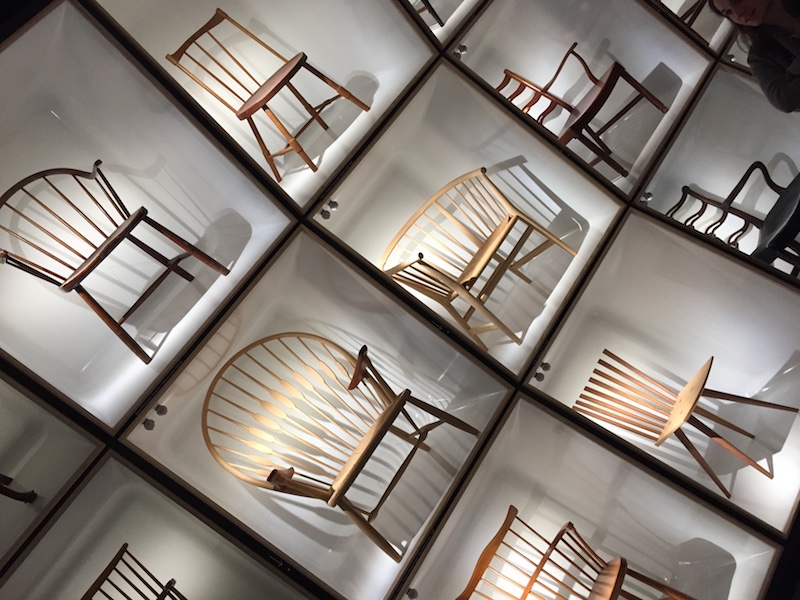We couldn’t go all the way to Copenhagen and not indulge our love of Scandinavian design.
So with rain falling on our first full day in the city, the Designmuseum Denmark was an obvious destination. Despite getting on the wrong bus and having to walk further than we expected in the showers, we eventually found it in a grand if quiet district of mansions and fine houses close to the royal palace at Amalienborg. Not surprisingly, the museum was busy with other visitors seeking an indoor option on a wet and miserable day.
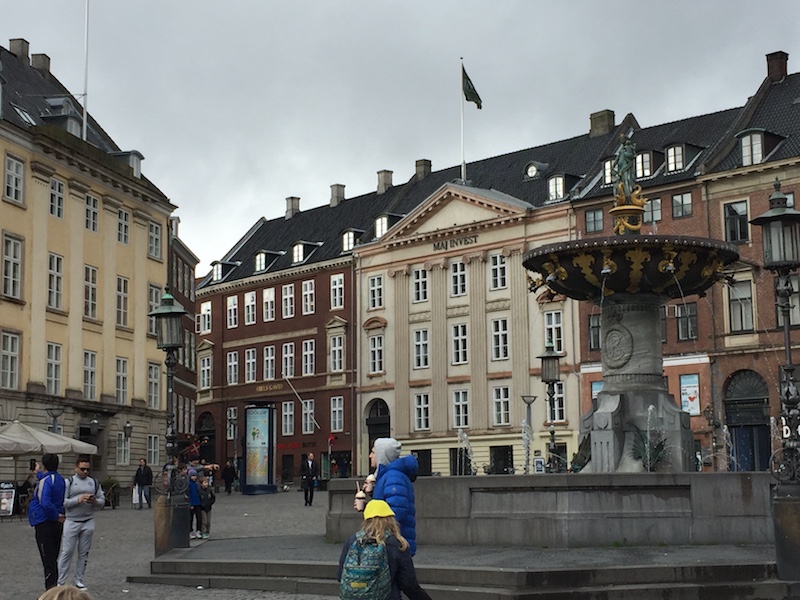
Housed in an 18th century building that was once a hospital, it turned out to be something of a mixed affair. First up was a fascinating smorgasbord of products designed by talented Danes, from sleek homewares, to stylish furniture and chairs, colourful retro posters and funky fashions. Some harked back to the past, some reflected the present, others looked to the future and the need for a more sustainable world.
But while the individual pieces were great to look at and learn about, there was no clear narrative and I left the museum none the wiser as to why Danes do design so well and what inspired their greatest designers. The much-heralded shop was a bit of a disappointment too. Elsewhere the museum hosted an OK European fashion and textiles collection from across the centuries, as well as a special exhibit that showed how Japanese design had influenced Scandinavian designers. Neither of them really floated my boat.
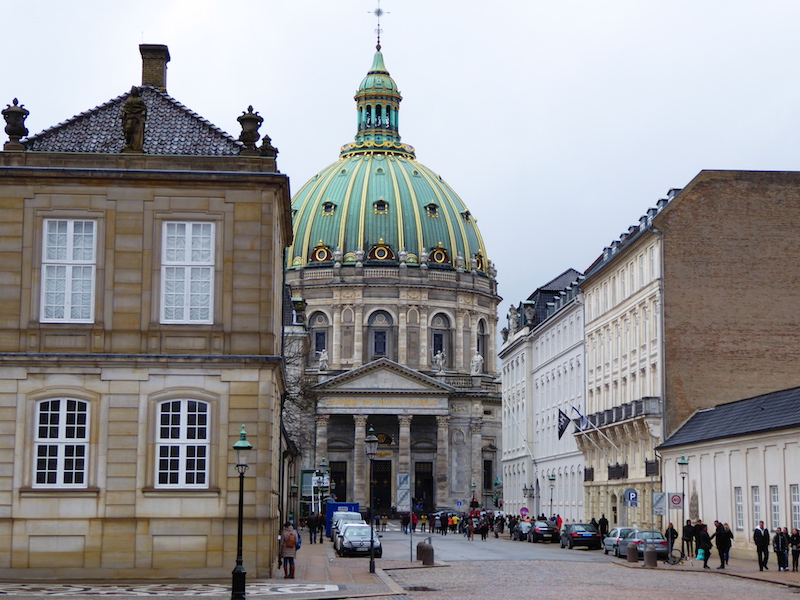
We lunched nearby on beer and smørrebrød – elaborately prepared, tasty and generously loaded open sandwiches – and then found ourselves admiring the epic green copper dome of the Marmorkirken, otherwise known as the Marble Church or Frederik’s Kirke. Like the Pantheon in Rome, the church is circular and it’s a breathtaking sight inside and out, even to an atheist like me. However, it took a long time to build. The foundation stone was laid in 1749 but the money ran out and it wasn’t until the 1890s that it was finally completed.
The church looks out over Amalienborg Palace, which is home to the royals as well as a museum about the building and the family. The palace is actually made up of four identical buildings that face each other on a square, with a statue of Frederik V at its core. In turn they’re guarded by soldiers wielding lethal automatic weapons but dressed incongruously in fairy tale costumes and bearskins that made them look every bit like characters out of Chitty Chitty Bang Bang.
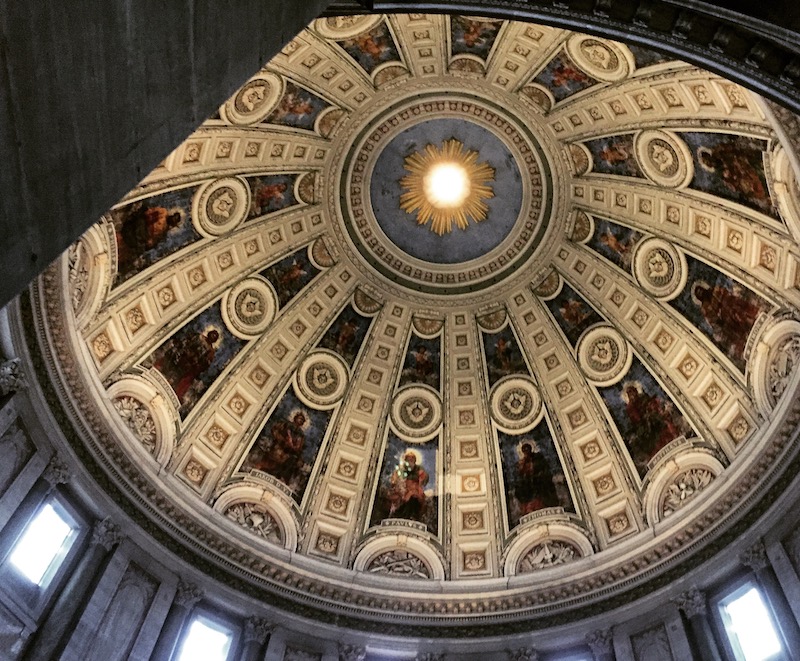
The highlight of our visit was a special exhibition called From the Royal Attics, which featured an extensive collection of goodies from the royal store rooms, including valuable artworks, jewellery and porcelain, as well as more intimate things such as photos, toys, knick-knacks, clothes and letters. It was these sometimes fascinating lesser value items that actually told us much more about the family, their likes and dislikes, their lives and loves, than the grand antiques and priceless portraits. And then we toured the rooms that kings and queens from the last 150 years used, because we do love a palace…
Later, we walked back to our hotel through the grand streets of the royal quarter and busy Nyhavn, via the shops clustered along Stroget. Sadly the global chains dominate, making Stroget look much like any other shopping district in Europe.
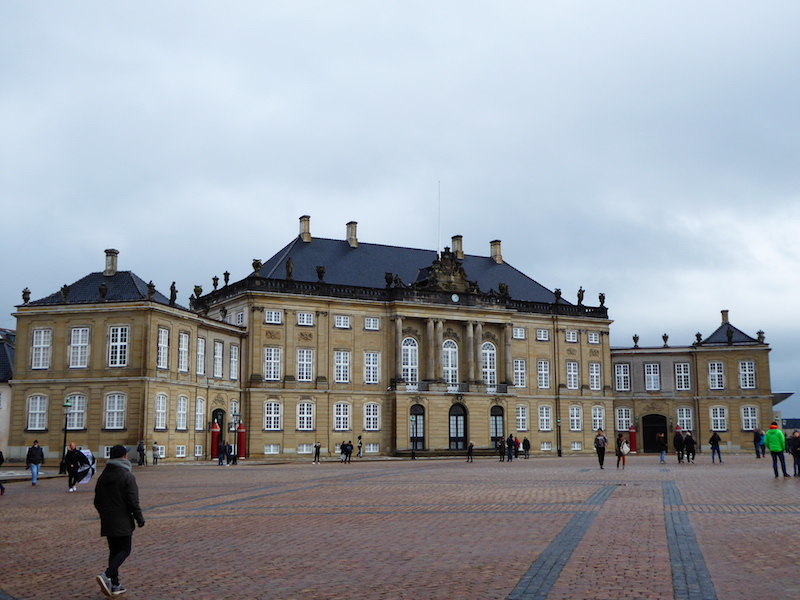
Come evening we walked to Restaurant Cofoco just down the road in Vesterbro. New Nordic cuisine and handsome waiters were in evidence, as well as the usual high prices, but the collection of small plates we ordered were delicious and included marinated salmon, a mussel soup and succulent lamb neck. A good Riesling washed it all down.
In the cold and damp, we walked off our food while aiming for Studiestræde – a street supposedly good for night life. But the gay bars looked lifeless and tacky so we found ourselves in the comfortable (dare I say hygge) surroundings of a bar called The Living Room, drinking cocktails and soaking up the atmosphere. Nice…

